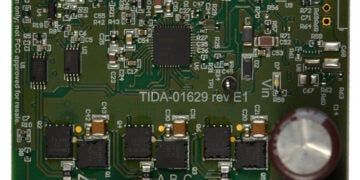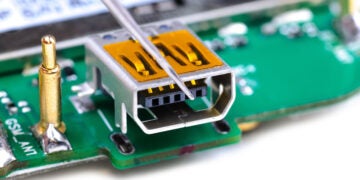
In the early days of PCB design (before PCs and CAD software) designers working on new boards had to do everything by hand. Imagine trying to place millions of transistors like that! Now that CAD applications have become the industry standard for mechanical and electronics design, product design teams need to keep an organized library of reusable models for important components. With the millions of electronic components on the market, design teams need tools that help them stay organized and keep component data current.
Before web integration was the newest trend in the software world, designers were forced to create their schematic symbols and component footprints manually. Designers would then need to keep these models organized so they could reuse models with common footprints when needed. New software tools help keep component data current, but PCB designers should still follow some basic component library management processes. Whether you work in a large enterprise or small board house, the right software tools can make component management easy.
Enterprise vs. Non-enterprise Component Management
The goal in component library management is to ensure every designer has access to the correct component information on-demand. This helps designers stay productive and focus on designing great new products, rather than spending time creating component models manually.
If you want your design team to remain productive, they need to be able to quickly access schematic symbols, PCB footprints, and 3D models for their desired components. Simply being unable to find reliable component models in a library or from manufacturers can delay or derail a project. This is why “PCB Librarian” is still a common job title at larger companies.
Unfortunately, smaller board houses and companies may not have the luxury of having a dedicated librarian manage components. This puts the responsibility for component library management squarely on design teams. They need several solutions to locate and quickly share verified component data and libraries. Quick access to verified component data helps small design teams focus on creating new products and reduces the time involved in component library management tasks. These teams need to leverage their design software, data sharing tools, and component data services in library management.
Successful Component Library Management
Savvy design teams are going beyond using a simple Access database or Excel spreadsheet to track component sourcing information and shared component data. These tools may be fine for small design houses or the individual designer, but they quickly become unwieldy when working in a large organization with multiple design teams.
Component library management requires success in the following important tasks:
- Data sharing and visibility: All team members should have access to a central repository of component data and sourcing information. In large organizations, this is normally done through a local network or a proprietary online portal.
- Correct manufacturer part numbers (MPNs): Many components have a number of variants, and all variants need to have the correct MPN. This MPN should be searchable on manufacturer and distributor websites.
- Datasheet access: It is always a good idea to ensure datasheets are accessible alongside component models.
- Searchability through categorization: In many cases, designers need to search for the correct component based on category, rather than searching specific MPNs. Categorization makes component searching much easier.
- Redundancy elimination: Redundant component models should be consolidated into a single consistent set of component data.
- Symbols, footprints, and 3D models: All components should include these three pieces of data to enable effective electrical and mechanical integration. This is most easily accomplished by using verified component models directly from reliable sources such as Ultra Librarian, manufacturers, and distributors. Ideally you are provided with native CAD files that you can just use without any translation technicalities.
- Compliant components: Component footprints should obey important standards, such as IPC-7351 compliance as well as any specific manufacturer specifications.
- Seamless component data updates: Sourcing data needs to be updated often. Distributors can provide API access through your ECAD software, a 3rd-party data management platform, or a proprietary management system.

Not all component data is easily accessible, and some component data may be incorrect or non-existent. When working with uncommon or proprietary components, designers may need to create components directly from datasheets. This may require creating components from scratch, or by modifying an existing component. It’s up to the design team to ensure existing data is current as they start a new design.
Integration with ECAD Software
The recent trend in software development is far-reaching integration among disparate platforms. Web platforms are integrating with each other and desktop platforms are now starting to integrate with shared plugins like UltraBOM®. The ECAD world is no stranger to this type of integration, and Designers can take advantage of greater integration among formerly disparate platforms.
If you’re using some of the industry’s top ECAD applications, component library management is much easier when your ECAD applications access component data directly from manufacturers. This data can include:
- Schematic symbols: This saves designers time as they won’t have to manually create schematic symbols from datasheets.
- PCB footprints: Designers shouldn’t have to manually create components or rely on 3rd-party footprint generators.
- 3D models: This data is accessible in a variety of file formats (STL, STEP, DXF, etc.).
- Sourcing data: Design teams need to see quantities in-stock, MOQs, lead times, and prices.
- Lifecycle status: Designers can see which components are in-production or at risk of going obsolete.
The last two points are quite important. Designers, librarians, and project managers shouldn’t have to source a single component from multiple distributors unless absolutely necessary. Having access to this data within your ECAD software allows you to select suitable alternative components when sourcing at scale. This helps you meet pricing targets, avoid long lead times, and possibly extend the relevant lifetime of your product.
When you use a free service like Ultra Librarian, you’ll have instant access to accurate component data from major component manufacturers. This data is available through the web or directly in popular ECAD applications. Sourcing information is also instantly available from worldwide distributors. Rather than manually searching manufacturer websites for your component data or buying a subscription to a 3rd-party supply chain management service, you can access data on millions of verified components for free.
Work with Ultra Librarian to ensure your design and production team no longer needs to waste time creating potentially inaccurate models or redesigning boards after parameters didn’t align. Register today for free!.








